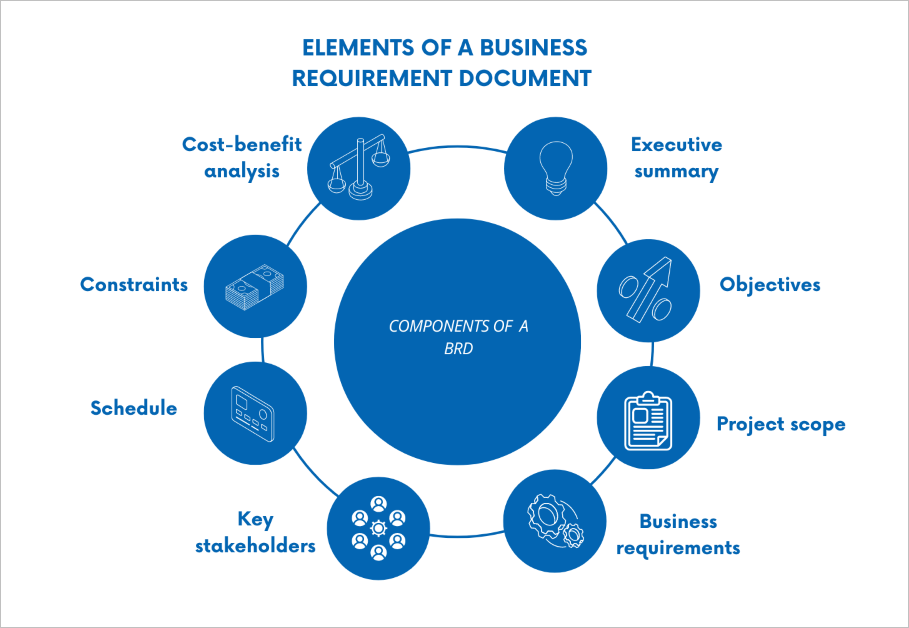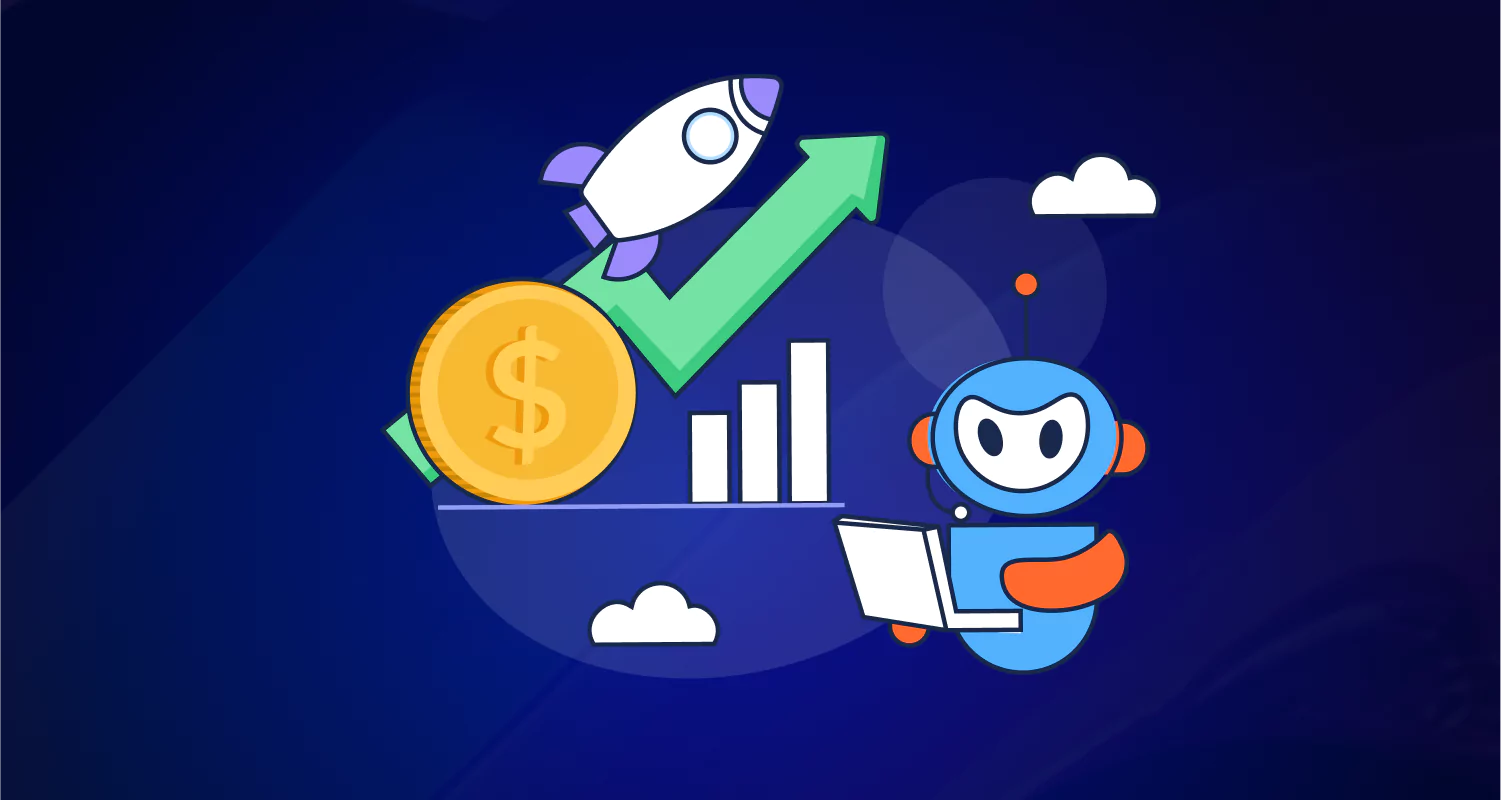A well-crafted business requirements document can help the success of any business project. It provides a roadmap that outlines the project’s goals, desired outcomes, and potential challenges.
According to the Project Management Institute’s 2021 report, inadequate requirements collection and upfront planning are two of the main causes of many project failures.
If done poorly, a business requirement document can be confusing and difficult to follow, leading to project failure.
In this blog, we delve into the basics of a business requirements document and its key components. We also provide examples to help you compose an excellent document that best serves your team.
What is a business requirements document?
A business requirements document is a comprehensive, formal document that details a project’s stakeholders, scope, and objectives. It outlines the key goals to provide clarity for everyone involved and explains a project’s requirements and how it will deliver value.
A business requirements document serves as the starting point of a business project, aligning the team on what they’re building, why it’s essential, and how to achieve it.
Key components in documenting business requirements
A robust business requirements document must capture a project’s essential features, functions, and constraints.
Since it is the principal guiding document that manages all project activities, it should be detailed and thorough and contain multiple components.

Executive summary
An executive summary provides an introduction and brief overview of the project. It may also provide the project’s background or history.
The summary outlines the project’s goals, key stakeholders, scope, key deliverables, and major requirements.
Project objectives
Project objectives are goals that your business project aims to achieve. Objectives show a clear connection between the problem you have, your solutions, and the results your proposed solution will bring.
This section typically includes a list of these goals to ensure clarity for everyone involved. Objectives should be concise, achievable, and measurable.
Additionally, this section should also clarify how those objectives fit with the business’s overall goals.
Project scope
The project scope covers what will be completed within the project’s bounds. It outlines a project’s deliverables and budgets and helps manage customer expectations.
Moreover, the project scope defines what is to be done and what isn’t. It outlines the amount of work involved and sets apart relevant tasks from out-of-bound tasks. This ensures you maintain focus on the set goals.
A typical project scope might entail the following:
- Project timeline
- Project budget
- Deliverables
- Project team
- Acceptance criteria
Business requirements
Business requirements outline what you intend to do toward the completion of the project. These requirements are critical components that your solution must have to complete the project and satisfy all stakeholders.
This should include timelines, diagrams, and charts to help plan and record progress.
They are often placed in two major categories:
- Functional requirements: These give the details of what the system would be able to do, like logging in users, processing orders, or creating reports.
- Nonfunctional requirements: These provide the standards expected from the finished product. They can be quality attributes such as the number of users or the speed of a system.
Key stakeholders
Stakeholders include individuals with an interest in your project. This could include:
- Team members
- Project managers
- Executives
- Clients
These individuals are most likely to read the business requirements document. Additionally, with everyone aware of their roles, you eliminate ambiguity and confusion.
Project schedule
A project schedule provides a timeline that details all the phases of the project, deadlines, and milestones. The timeline includes a system to measure the project’s progress to keep all stakeholders informed.
Project schedules are often broken down into phases. It should include an allowance for documenting, reassessing, and adjusting the project according to your team’s current capabilities or market trends.
Project constraints
This section describes the factors that could threaten or delay the completion of the project, explaining these risks and their likelihood.
It may also include a plan to address these risks and who will be responsible for handling them.
Examples of project constraints include:
- Scope creep, such as added requirements
- Resources
- Communication risks
- Budget
Cost-benefit analysis
A cost-benefit analysis describes the expenses associated with your project and explains the resultant benefits. It analyzes the return on investment that the entire project delivers.
This analysis is a reference point for measuring future performance against initial expectations, ensuring that the business requirements plan remains a dynamic and practical guide for the project’s direction.

Furthermore, it aids decision-makers in forming expectations, highlighting the feasibility of the business idea, and helping stakeholders compare the expected expenses against the expected benefits.
Sample business requirements template
A business requirements document needs to be precise. To help you draft an effective BRD, check out the following examples of how to begin one.
Example 1
|
Customer Relationship Management (CRM) Implementation
|
Example 2
Business Requirements Document Template: Tach Marketing Blog
Executive summary
This project aims to create a marketing blog site to improve the customer experience and enhance brand perception.
Project details
Project name: Tach Marketing Blog
Project manager: Sally Brown
Date submitted: January 27, 2022
Document status: [ ] Draft Proposed [ ] Validated [ ] Approved
Project background
Our current website faces usability issues, resulting in a high bounce rate and low conversion rates. Customer feedback highlights the need for a more intuitive design and faster page load times.
Project objectives
Improve customer retention: Target is 10% year-over-year improvement.
Increase website views: Goal is 1,000 additional views per month.
Enhance conversion rates: Target is 20% average increase.
Project scope
- The marketing team will create content collaboratively.
- SEO and design teams will optimize the blog.
- Distribution: Four in-depth posts per month.
Business requirements
| Priority level | Requirement description |
| High
Medium Medium Medium |
Content planning and scheduling
Website analytics CRM tracking SEO analytics |
Key stakeholders
| Name | Role | Duties |
| Salma Hammel
Tom Hall Kristin Watson |
Manager
Department head Marketing lead |
Head of project
Approvals Content |
Project constraints
Timeline: Complete four posts per month (one post per week).
Budget: Stick to a $2,000 monthly budget.
Team availability: Must adhere to team member schedules.
Project risks: Views may only be received if ranked in Google.
Cost/benefit analysis
| Cost | Benefit |
| SEO software
Blog design Software hosting |
Insights for Google rankings.
Improved audience engagement. Essential for running the blog. |
| Total
Expected ROI |
2,000/month
3,000/month |
Why are business requirements documents important?
Business requirements documents serve as critical foundations for any project, helping to ensure that the outcome aligns with the business’s needs. Besides this, documenting business requirements also has several benefits.
Provides a clear understanding of objectives
A business requirements document lets you clearly define your project’s objectives and goals, reducing ambiguity and stakeholder uncertainty.
Moreover, this document describes the expected results that the project should attain and how they tie to the overall mission, ensuring that everyone remains focused throughout the process.
Enables you to plan your resources better
A business requirements document helps you understand your budget and resource constraints by estimating the time and finances required to complete a project.
It provides detailed information on what needs to be accomplished, aiding in more accurate planning and preventing cost overruns, delays, and other unwanted expenses.

Moreover, clearly defining the business requirements upfront lets your team know precisely what milestones to deliver and reduces the likelihood of misunderstandings or time and resource waste.
Reduces risks
Identifying and documenting business requirements early in the project helps to pinpoint potential risks and issues that could affect the project’s success.
Recognizing risks upfront allows you to develop mitigation strategies earlier and proactively address challenges.
Helps track the progress of the project
A business requirements document acts as a guide for everyone involved in the project by making progress monitoring easier and ensuring the project stays on track.
It breaks a project into steps that can be digitally checked off by team members, lessening the likelihood of project failure due to skipped steps.
Promotes transparency and accountability
Documenting business requirements helps you to plan a project’s deliverables, ensuring that everyone plays their part toward the project’s eventual success.
A business requirements document also serves as a benchmark against which the project’s deliverables can be verified, helping to ensure quality and completeness.
Achieve your goals with a robust business requirements document
When crafted effectively, a business requirements document directs a project, keeping everyone on the same page and making eventual project success more likely.
Follow this guide to write an excellent business requirements document. Improve communication, reduce mistakes, align your team to the project objectives, and let the document serve as a roadmap to your project’s success.
BoldDesk’s robust knowledge base can help you store your document templates, eliminating the need to draft a new one with every project. Its integrations feature allows you to communicate effectively and collaborate with stakeholders using several productivity tools.
Take the first step towards achieving your business goals with BoldDesk. Sign up for a free trial today or book a live demo to learn about its features.
We hope that this blog post was insightful. Feel free to share additional thoughts and feedback in the comment section below!
Related articles


















 Email Ticketing System
Email Ticketing System Shared Inbox Software
Shared Inbox Software Multi Brand Help Desk
Multi Brand Help Desk Internal Help Desk Software
Internal Help Desk Software Trouble Ticketing Software
Trouble Ticketing Software Mobile Help Desk
Mobile Help Desk 


















